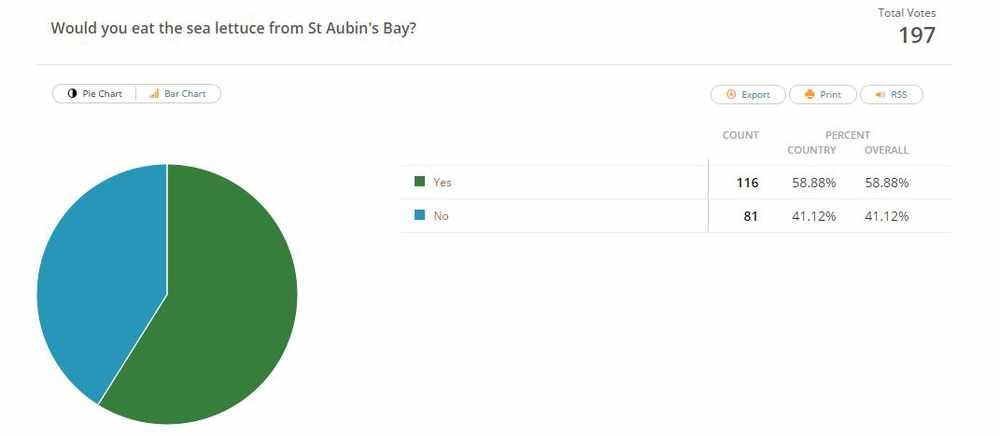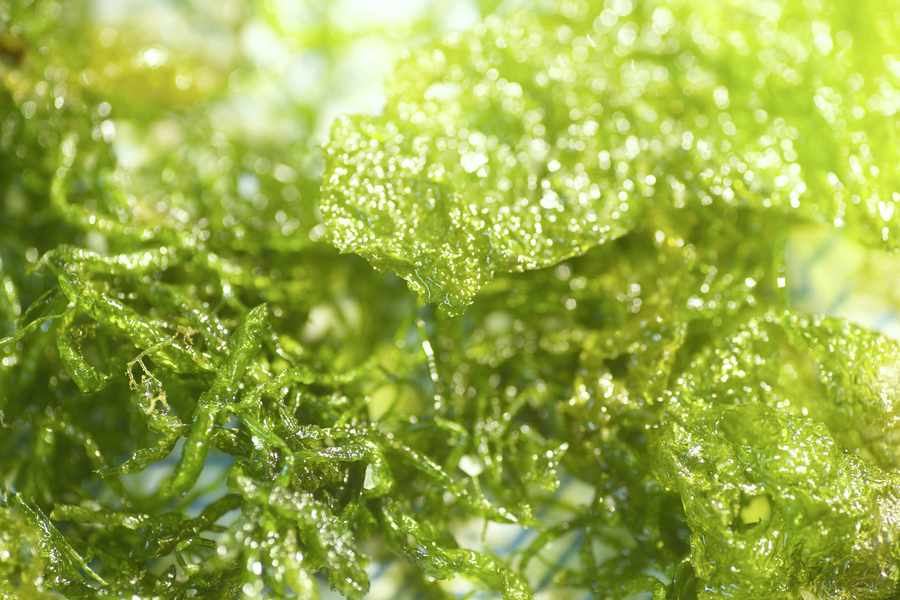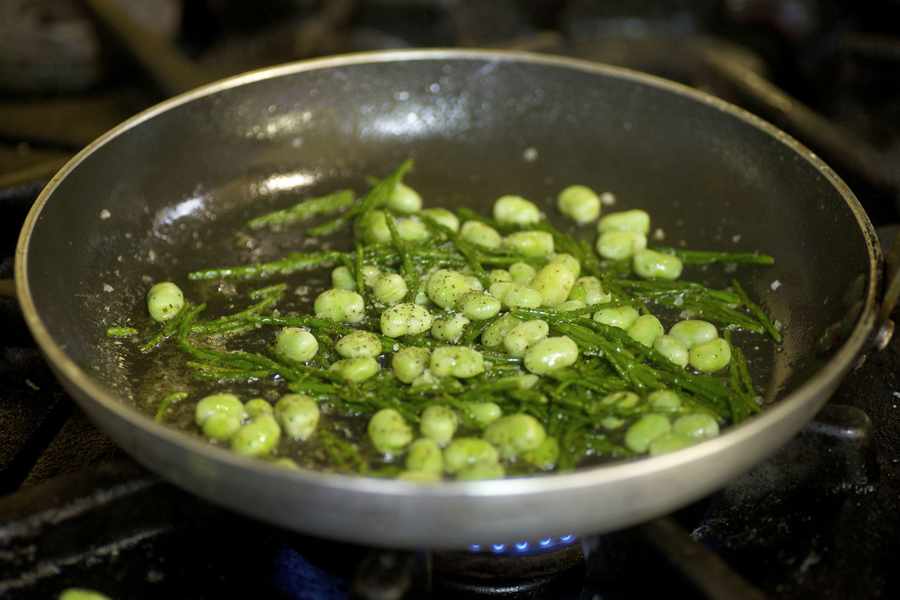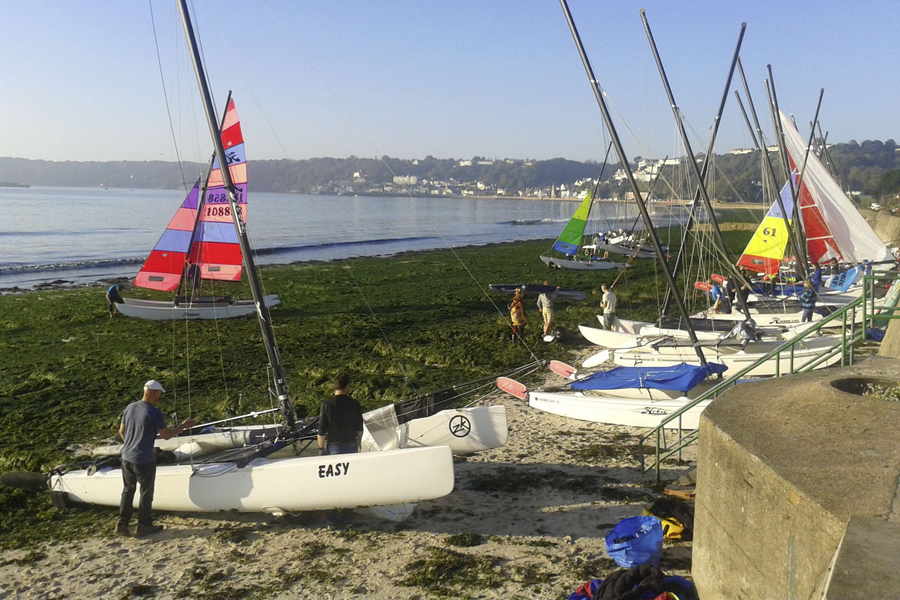A combination of unseasonably warm weather, a succession of southerly winds, big tides and a lack of autumn storms have allowed large amounts of the slimy weed to accumulate on the beach much later in the year than usual.
This week TTS staff cleared the area between the Gunsite Café and the La Haule Slip after receiving permission from the Environment Department.
Usually, beach-cleaning operations end in September.
The sea lettuce, which was a foot deep in places, was moved down to the low-water mark.
Environment Minister Steve Luce said that apart from the weather conditions, the high level of nitrates in Jersey’s seawater was a cause of the sea lettuce bloom.
He said: ‘Jersey is unfortunate to be located in an area of the sea where the nitrate levels are very high.
‘Some of the nitrates come from streams going into the bay, but the area around Jersey has high nitrates.
‘Other areas, like Brittany, are worse than Jersey, but that doesn’t mean that we shouldn’t do our bit to try to reduce nitrate levels.’
Transport Minister Eddie Noel said that he couldn’t remember seeing such a large bloom of sea lettuce in November.
His department is looking at ways to deal with it. Deputy Noel said: ‘There is no easy solution to this for Jersey.
‘There are high levels of nitrates in the Bay of St Malo and we don’t have the land resources to deal with the problem like the French do.
‘The idea is in its early stages, but we are looking at holding an international conference here to discuss what can be done about the problem.’
Users of St Aubin’s Bay, including water sport enthusiasts, have said that they are concerned that the levels of weed in the bay are hampering their activities.
Gordon Burgis, who is involved with Hobie cat racing in the bay, said that the high level of sea lettuce was a safety risk.
‘I can’t remember it being this bad in November in the years I have been enjoying sports in the bay. It’s a health and safety hazard.
‘We took the Hobie cats out last Sunday and people were slipping on the slipway because of the sea lettuce.
‘It a risk for everyone who uses the bay.’



The sea lettuce that turns St Aubin’s Bay green could be cultivated and used in fish food, toothpaste or canned goods, a former Environment Minister said in 2012
The radical suggestions came as then Environment Minister Deputy Rob Duhamel told an Environment Scrutiny panel what he thought should be done about the thousands of tons of sea lettuce that regularly cover the bay.
Deputy Duhamel told the panel that the Transport Department’s method of dealing with seaweed – getting heavy machinery to move it to the low-water mark – was not having any effect at all. He suggested that one option was for a seaweed-growing industry to be set up to cultivate the plant matter and sell it on.

‘Algae is a fantastic plant,’ he said. ‘It introduces a revenue-generating opportunity. The pharmaceutical industry uses alginates, they are present in canned foods and they have to be grown somewhere. They could be grown here.’
The Environment Minister added that seaweed was used by eastern countries to make fish food and he explained that he had already been contacted by an Islander who was interested in using the sea lettuce to make pellets that would feed beds of ormers.

Sea Lettuce Puree
- 500g sea lettuce
- 100ml double cream
- ½ garlic clove (infused in cream)
After washing thoroughly, blanch the sea lettuce in salted boiling water for 20-30 seconds, Remove and Immerse in ice water to refresh. Remove and pat dry between two clean cloths. Gently Heat the double Cream with the garlic to just below boiling point, strain and blend with the sea lettuce, season to taste.
Best served with local plaice or sass as a sauce or garnish.
Dried Sea Lettuce
- 1kg of sea lettuce
Pat dry the Lettuce between two clean cloths, place onto baking trays lined with greaseproof paper. Place into an oven on its lowest fan setting for 4-5 hours or best left overnight. Food dehydrators are best for this process, but an oven will work fine.
Remove the lettuce, at this point all the liquid should have evaporated leaving you with brittle, crisp leaves. These can now be blended to make a powder or used as a garnish for fish and shellfish. The powder can be used as a garnish on a plate or as a seasoning in place of salt for cooking fish and shellfish.
Pan roasted local bass, marsh samphire, broad beans, textures of Jersey sea lettuce
- 2 bass fillets
- 100g marsh samphire
- 100g broad beans
- 30g dried sea lettuce
- 30g fried sea lettuce
- 20g sea lettuce puree
- 1 lemon
Blanch your broad beans and samphire in salted, boiling water for 1-2 minutes and refresh in ice water. I used the same water I blanched the sea lettuce in to retain some flavour. Pat dry your bass fillets and season with sea salt flakes, fresh pepper and rapeseed oil. Pre-heat a non stick pan to a medium heat, place the bass fillets skin-side down and hold for twenty seconds to keep the skin in flat contact with the pan, cook until the skin becomes crisp and add butter, turn the fish and remove from the heat, baste with the foaming butter in the pan until a golden colour is achieved. Remove from pan and rest for 1 minute. Pour the excess fat from the pan and add a squeeze of lemon juice, the blanched samphire and broad beans. Season and toss in the bass juices till warm and coated. Let this drain for 1 minute on some kitchen towel.






